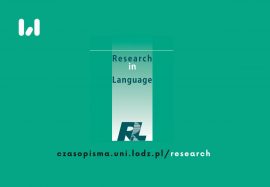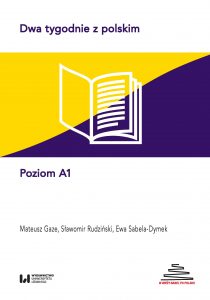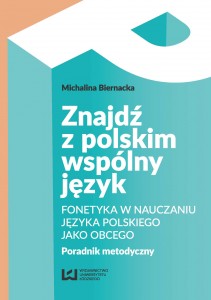Research in Language | Vol. 21-23, nr 2-4 (2023)
Opublikowano: 9 stycznia 2024

Zapraszamy do lektury trzech nowych numerów czasopisma naukowego Research in Language. Kwartalnik publikuje artykuły badawcze i recenzje książek z zakresu fonetyki, fonologii, morfologii, składni, semantyki i pragmatyki, ale także przedstawiające wyniki badań różnorodnych aspektów języka: poznawczego, psychologicznego, instytucjonalnego czy społecznego, prowadzonych wielowymiarowo i interdyscyplinarnie.
Punktacja MEiN: 100 punktów (lipiec 2023)
Vol. 21 No. 2 (2023)
Elaboration sites and prepositional meaning construction in English and Polish
Maria Brenda
Although prepositions are relational linguistic units of modest sizes, they can contribute a variety of different meanings to the constructions they are found in. The paper looks into the notion of e-site, which allows for conceptual elaboration of more schematic entities along the vertical and horizontal dimensions of the human conceptual representation. It argues that e-sites are useful for prepositional meaning description. First, e-sites come into play when schematic TRs and LMs of the preposition are elaborated by more specific conceptual structures, thereby, forming a vertical schematic-specific hierarchy of conceptual structures. Along the horizontal dimension, e-sites are responsible for the integration of the conceptual content of expressions which come together to form constructions. This type of elaboration finds its expression in the typology of languages (satellite- or verb-framed) proposed by Talmy (2000) and elaborated by Slobin (2005).
What’s Dog Got to Do With It? Motivation Behind Denominal (Animal) Verbs
Alisa Egorova, Hans-Georg Wolf
This paper investigates the motivation behind denominal conversion of animal nouns to verbs as well as their resultant senses. Upon critical consideration of previous accounts of animal verb senses and their possible sources, the argument is put forward that animal verbs are not uniform in their semantics and cannot therefore be considered a separate conceptual category or analysed as such. Previous findings are then reinterpreted from the point of view of frame-based accounts of denominal conversion. Animal verbs are shown to be generated by the same grammatical generalisations as other denominal verbs of English, with their metaphoricity appearing to be a concomitant rather than a driving factor in the grammatical act of their conversion.
A Topic-Based Diachronic Account of the Polysemy of the English Verb ‘Run’
Naoki Kiyama, Yoshikata Shibuya
This study discusses the polysemy and diachronic semantic frequency shifts of the English verb run using a topic model. The increase in corpus-based research in cognitive linguistics has yielded many empirical findings on various aspects of language. However, there are still areas that have not received sufficient attention. One such area is the study of word meaning in terms of related topics and social interest. In this paper, we analyze diachronic data collected from the NOW corpus (News on Web) and argue that the polysemy of run can be described in terms of topic, and that the change in the use of the meanings that this verb has can be described in terms of a change in social interest.
Speech Acts and Relevance: in Search of a Dialogue
Iwona Witczak-Plisiecka
This paper comments on the notion of the speech act in the tradition of J.L. Austin (1962/1975) in an attempt to assess its relevance (sic!) in a relevance-theory-based research. Relevance theory (RT) since its introduction (Sperber & Wilson 1986/1995) has consistently rejected much of speech act-theoretic thinking, explicitly questioning its having a central position in pragmatics. Using the notion of “the speech act”, RT seems to ignore most of speech act-theoretic apparatus. However, despite the superficial divergence between the two frameworks, the advancements within RT, as developed especially by Deirdre Wilson, and her co-researchers over the years, are convergent with selected thoughts in the Austinian thought. The paper comments on selected points which bring the two linguistics approaches together.
Pro-Peace vs. Pro-War Conceptualizations in the Language of Hungarian Propaganda
Marcin Grygiel
The language of propaganda can be treated as a specialist language with its own specialized terminology. It is produced by groups of variously configured propaganda experts responsible for the creation of propaganda messages, placed at one end of the communication channel, together with its specific target audience that consumes these messages, situated at the other end of the communication channel. As a result of this specialized communication process, the language of propaganda is function-oriented and its focus is always put on the objectives that are to be achieved. These include shaping and manipulating public opinions. For these goals to be successful, the language of propaganda must be equipped with efficient and well-designed conceptualizations able to change and modify the way people think. Defined as such, the language of propaganda is not a purely linguistic construct, but a multimodal tool able to make use of the visual and audiovisual output as well. The interest in mental processes such as conceptualization lies at the very center of cognitive linguistics and the study of cognitive mechanisms responsible for various types of conceptualizations is of high priority in cognitively driven approaches to language. Another issue which makes cognitive linguistics suitable for this type of research in specialist languages is its long standing preference for multidisciplinary and multimodal phenomena. Applying the methodology of cognitive linguistics, the present paper aims at identifying and discussing the PRO-PEACE vs. PRO-WAR network of conceptualizations in the language of Hungarian propaganda, often compared in its mastery with Orwell’s newspeak or the Soviet propaganda machinery because of its power and influence. Hungary’s leading right-wing party, Fidesz-KDNP, has retained political control in Hungary ever since its landslide victory in the 2010 national elections and developed a powerful propaganda tool that is ideally customized to the culture-specific preferences of Hungarian voters. Through quantitative and qualitative analysis, this research studies linguistic expressions shaping PRO-PEACE vs. PRO-WAR conceptualizations with their rich social, historical and cultural contexts.
The Pronunciation of the Capital of Ukraine in English-Speaking Media
Lina Bikelienė
Speaker identity is one of the factors that might play a role in the realisation of sounds. Previous studies have observed that phonetic variations, alongside the formation of speaker’s identity, can index political meaning. This article aims at analysing a politically conditioned variation in rendering the name of the capital of Ukraine. Though the change from ‘Kiev’ to ‘Kyiv’ precedes the beginning of the Russian war in Ukraine, the analysis shows 24 February, 2022 has accelerated the process. Contrary to the general tendency for a language change to manifest first in the spoken mode and then proceed to writing, the findings indicate faster shift from ‘Kiev’ to ‘Kyiv’ in written English.
Vol. 22 No. 3 (2023)
Theoretical and Practical Phonetic Instruction in the Eyes of Advanced Students. An Editorial to RiL Special Issue Vol. 21.3 and 21.4 on Pronunciation Research and Pronunciation Learning/Teaching in a Global EFL Perspective
Anna Jarosz
The article focuses on advanced students’ beliefs and views related to their own pronunciation and pronunciation learning/teaching. It also presents their opinions on the university courses dedicated to phonetics and phonology of the English language. Furthermore, it analyses the students plans and ambitions for their future self-study and intentions to further develop and improve their English pronunciation. Finally, the article introduces varied and numerous research areas investigated in the current two issues of RiL and points to the significance of the most recent findings in the field.
Accents in Speech Recognition through the Lens of a World Englishes Evaluation Set
Miguel Del Río, Corey Miller, Ján Profant, Jennifer Drexler-Fox, Quinn Mcnamara, Nishchal Bhandari, Natalie Delworth, Ilya Pirkin, Migüel Jetté, Shipra Chandra, Peter Ha, Ryan Westerman
Automatic Speech Recognition (ASR) systems generalize poorly on accented speech, creating bias issues for users and providers. The phonetic and linguistic variability of accents present challenges for ASR systems in both data collection and modeling strategies. We present two promising approaches to accented speech recognition— custom vocabulary and multilingual modeling— and highlight key challenges in the space. Among these, lack of a standard benchmark makes research and comparison difficult. We address this with a novel corpus of accented speech: Earnings-22, A 125 file, 119 hour corpus of English-language earnings calls gathered from global companies. We compare commercial models showing variation in performance when taking country of origin into consideration and demonstrate targeted improvements using the methods we introduce.
Alignment in ASR and L1 Listeners’ Recognition of L2 Learner Speech: French EFL Learners & Dictation.Io
Vincent Chanethom, Alice Henderson
This study is an extension of Inceoglu et al.’s (2023) study on Google Voice Typing as a pronunciation learning tool. We used the Automatic Speech Recognition (ASR) tool on the dictation.io website (Agarwal, 2022), and our participants were L2 English learners of a different L1, but similar proficiency level. Twelve L1 English listeners assessed the L2 English from four L1 French speakers in terms of intelligibility and comprehensibility, measured by word transcription and Likert scale ratings respectively. Their scores were compared to ASR output. The goal was to determine how accurate the tool is, and to what extent its accuracy correlates with human listeners. The results were generally consistent with those of Inceoglu et al. (2023), with few exceptions which we discuss in the current study.
Self-Study of the MOOC English Pronunciation in a Global World: Metaphonetic Awareness and English Accent Variation
Marta Nowacka
This paper reports on a study in which Polish first-year university students of English, self-studied the massive open and online course (henceforth MOOC) entitled “Pronunciation in a Global World” to gain some knowledge on the fundamentals of phonetics (the notion of comprehensibility, nativeness and identity; vowels, consonants and selected suprasegmentals) and English accent variation. Its two main goals are: firstly, to examine the MOOC’s impact on the participants’ understanding of basic phonetic concepts and, secondly, to obtain the users’ assessment of this MOOC’s attractiveness and usefulness.
In general, the results do not give evidence for the positive influence of the MOOC course on the students’ meta-awareness of English phonetics, since there are statistically significant differences in only three of sixty-eight questions between the experimental and control group. Nevertheless, many informants regard the course as useful (72%) and attractive (49%).
Although the results do not support the hypothesis of the MOOC’s beneficial role in facilitating the understanding of English phonetics our stand is that this online training could complement classroom teaching as a form of blended learning.
A Multimodal Study of How Pronunciation-Induced Communication Breakdowns are Managed During Tandem Interactions
Loulou Kosmala, Céline Horgues, Sylwia Scheuer
This paper offers quantitative and qualitative findings from the exploration of communication breakdowns in English tandem interactions, by adopting a multimodal perspective. It focuses on the ways in which pronunciation-induced CBs are managed by language peers in a tandem setting. This study shows cases where it was the non-native participant’s output that was the main communicative stumbling block, with a view to reporting on pronunciation-induced breakdowns. More specifically, our analyses target the ways in which CBs are signaled to the interlocutor with different multimodal cues (verbal / vocal / visual). Those pronunciation issues are dealt with in a highly collaborative manner, through multimodal communication strategies, revealing recurrent visual patterns involving different visible body articulators (i.e., the face, the trunk, and the hands) which differ according to participants’ status (native versus non-native).
Tailoring International Pronunciation Activities for Hungarian Learners of English
Noémi Gyurka, Ágnes Piukovics
Pronunciation teaching is gaining more and more recognition in international contexts, however, empirical research concerning pronunciation teaching is underrepresented in the Hungarian educational context. While there are a few studies that briefly touch upon the learners’ attitudes towards pronunciation, there is limited data concerning the ways in which pronunciation could be integrated into the Hungarian English as a foreign language (EFL) classroom. Therefore, to narrow down the gap, this paper aims to investigate how international pronunciation activities could be modified when teaching Hungarian learners specifically, and how these activities could be integrated successfully into the classroom. The case study conducted involved 13 learners, who were taught by the first author of the paper as the teacher-researcher. The timeframe of the research was 11 weeks, throughout which altogether five pronunciation activities were tailored and integrated into the lessons. The results indicate that taking only methodological considerations when deciding on what feature to teach was not sufficient for successful integration. It was concluded that the learners needed to be aware of the goals of the task, its relevance to their development, and most importantly, they had to be motivated and in turn engaged, as all the factors mentioned above are prerequisites of successful integration.
Vol. 23 No. 4 (2023)
Pronunciation Anxiety, Pronunciation-Related Views and Pronunciation Learning Actions of EMI and English Major Students
Esther Gómez Lacabex, Hanne Roothooft
The present study explored pronunciation views, learning actions and anxiety in two differentiated English learner groups: one group which was studying English in an engineering degree and another group enrolled in an English major degree. The results from a questionnaire and focus group sessions revealed that the groups share some views such as a wish to improve their English pronunciation and adherence to native pronunciation references as well as pronunciation learning actions such as watching series or talking to native speakers. However, we also observed significant differences between the groups as the English major students tended to view pronunciation learning as a discipline, while the engineering students saw it as a communicative skill. The English majors also exhibited more pronunciation anxiety, specifically fear of ridicule and worry of making mistakes. They also revealed more anxiety-related themes in the focus group discussions such as worry about their pronunciation, pronunciation shame or unease because they do not know how to pronounce a word or cannot understand. Finally, the English major group was also more demanding of lecturers’ accurate pronunciation. These results suggest that differences regarding English pronunciation anxiety between different learner profiles may need to be considered during their English language learning progress.
Zooming into the L2 Speech Fluency Markers of Anxious and Non-Anxious Advanced L2 Learners – an Extreme Case Sampling Report
Magdalena Szyszka, Pekka Lintunen
The study examines selected temporal markers of L2 utterance fluency in the speech of advanced L2 learners who exhibit high (HLA) and low (LLA) language anxiety levels. Out of the pool of 59 participants, six HLA and six LLA individuals were selected for an in-depth analysis on the basis of their scores on the Foreign Language Classroom Anxiety Scale (the FLCAS) (Horwitz, Horwitz, & Cope, 1986). Speech samples from a monologue task were examined for selected L2 utterance fluency measures: filled (FP) and silent pause (SP) frequency, mean length of silent pause (MLSP), articulation rate (AR), speech rate (SR), and mean length of run (MLR). The results provided insights into the L2 speech fluency profiles of anxious and non-anxious individuals. The analysis disclosed relatively higher frequency and disparate application of FPs, slower speed of speech, and more varied profiles in MLR in the HLA group as compared to the LLA group. The findings yield pedagogical and methodological implications.
Personality as a Correlate of Accentedness: The Case of Formal Setting Without Pronunciation-Focused Instruction
Małgorzata Baran-Łucarz
The main goal of the study reported in this paper was to verify whether the Big Five personality traits can be considered correlates of accentedness in a setting deprived of pronunciation-focused instruction. Each trait was measured among 58 English majors in Poland, who were just beginning their education at the university, by the means of the Polish version of Goldberg’s measure, i.e. IPIP-BFM-50. The levels of the traits were correlated with the participants’ degree of accentedness assessed by 2 judges on a 9-point Likert scale with the use of a reading task. The quantitative data were supplemented by interviews with 10 participants representing high and low levels of accentedness, which allowed to diagnose their motivation, attitudes towards the sound of English, pronunciation self-perceptions, and strategies applied in autonomous learning. The quantitative data showed a weak correlation only between Openness to experience and accentedness, which was further moderated by the other above-mentioned individual learner differences. Additionally, the qualitative outcomes suggested the importance of Agreeableness, which was found to be very high or high among learners with the lowest levels of accentedness.
Speech Rhythm in Spontaneous and Controlled L2 Speaking Modes: Exploring Differences and Distance Measures
Katherine Fraser, Joan C. Mora
Studies of speech rhythm have often used read speech rather than spontaneous speech in their comparisons. However, read speech has been shown to be perceptually different from spontaneous speech, which may be due to rhythmic differences between the two modes. To examine this, the effect of speaking mode (spontaneous or controlled) was assessed in a group of 82 Spanish-Catalan learners of English relative to a control group of 8 native English speakers. Results found strong rhythmic differences between the two modes, but minimal differences between the learners and native speakers. Additionally, Mahalanobis distance analyses revealed that non-native speakers differed significantly more from the native control group in the spontaneous condition than the controlled condition.
Asymmetrical Equivalence Classification – Cluster Affrication vs. Lenis Stops in the Speech of Polish Learners of English
Geoffrey Schwartz, Ewelina Wojtkowiak
According to the Speech Learning Model (Flege 1995), successful L2 phonological acquisition is facilitated by the formation of new phonetic categories in the L2. However, category formation may be hindered by equivalence classification, wherein speakers perceptually merge L1 and L2 sounds. This study examines L1 Polish learners of English, including a phonetic parameter that has received minimal attention: affrication of /tr-dr/ clusters in English. Two groups of speakers, comprising B1 level and C2 level learners, produced word lists containing both initial /tr-dr/ clusters, as well as singleton voiced stops /b, d, g/. The results revealed an asymmetry: both groups failed to suppress pre-voicing in /b, d, g/, but were successful in producing affricated clusters. A new category has therefore been formed for the clusters, but not for the singleton stops. Phonological implications of this finding are discussed.
Language Proficiency and Sonorant Devoicing in English Plosive-Sonorant Clusters
Klára Přečková, Pavel Šturm, Jan Volín
This article explores the timing of phonetic voicing in plosive-sonorant clusters in English. VOT was measured in two groups of Czech learners with different proficiency levels and a native English control group. The hypothesis was that cross-language differences in the implementation of the voicing contrast would be reflected in lower devoicing by the non-native speakers, modulated by proficiency. 24 participants read a text with plosive-sonorant clusters (such as in plan or troops). The study found that less proficient speakers exhibited smaller degrees of devoicing compared to more proficient speakers, who however did not differ from the native controls. In line with the absence of devoicing in Czech secondary-school textbooks, the results provide insight into the interplay between language proficiency and pronunciation details in L2 acquisition.
Komentarze
Ten post dostępny jest także w języku: angielski





